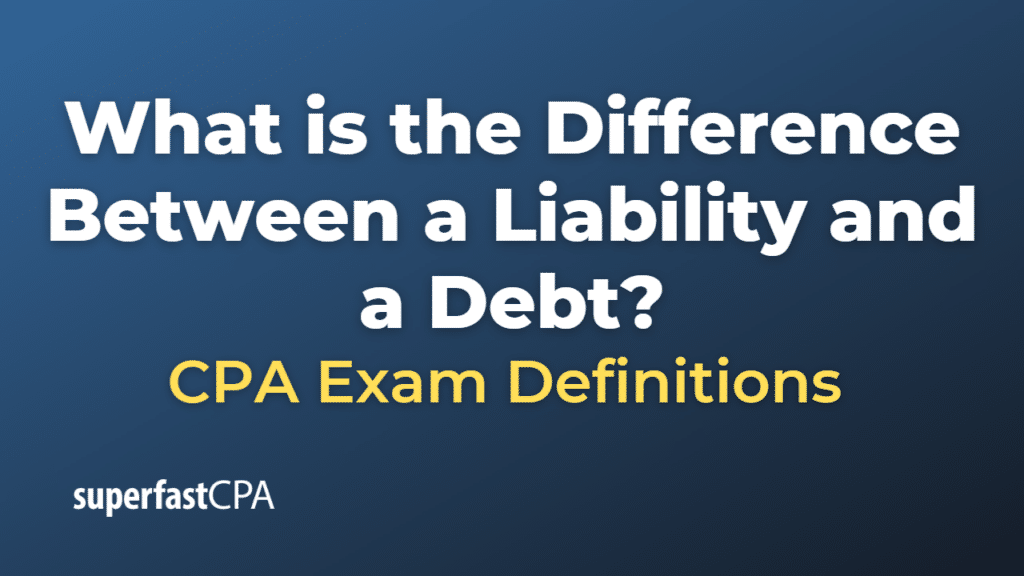Difference Between a Liability and a Debt
“Liability” and “debt” are two important concepts in accounting and finance. They are often used interchangeably in common language, but in accounting and finance, they have distinct meanings:
- Liability: A liability is a broader term that represents any financial obligation or upcoming duty a company has to pay. It includes all the debts a company owes, but it also covers other types of obligations. Liabilities can include accounts payable (money owed to suppliers), salaries payable (money owed to employees), interest payable, taxes payable, and deferred revenue (money received in advance for services to be provided in the future). Liabilities are part of the balance sheet and are often categorized as current liabilities (due within one year) and long-term liabilities (due after more than one year).
- Debt: Debt, on the other hand, is a subset of liabilities and typically refers to money borrowed from external sources, such as banks or bondholders, to finance company operations or expansions. Debts usually involve formal contractual agreements specifying repayment terms, interest charges, and the duration of the loan. Common types of debt include bank loans, bonds payable, and notes payable.
In summary, all debts are liabilities, but not all liabilities are debts. Debt specifically refers to borrowed money, while liabilities refer to any financial obligation a company has to pay.
Example of the Difference Between a Liability and a Debt
Let’s consider a hypothetical company, “TechStar Ltd.”
Liability:
TechStar Ltd. has various liabilities on its balance sheet as of December 31, 2023, such as:
- Accounts Payable: $20,000 (money owed to suppliers)
- Salaries Payable: $10,000 (money owed to employees)
- Taxes Payable: $5,000 (taxes owed to the government)
- Unearned Revenue: $15,000 (money received in advance for services to be rendered in the future)
These are all liabilities because they represent financial obligations that TechStar Ltd. needs to pay.
Debt:
Additionally, TechStar Ltd. has a long-term bank loan:
- Bank Loan: $100,000
This bank loan is a specific kind of liability that represents money borrowed from an external entity, in this case, a bank.
So, in this example, TechStar Ltd.’s total liabilities would be $150,000 ($20,000 Accounts Payable + $10,000 Salaries Payable + $5,000 Taxes Payable + $15,000 Unearned Revenue + $100,000 Bank Loan). However, its total debt would be $100,000, which is just the bank loan. This illustrates that while all debts are liabilities, not all liabilities are debts.












